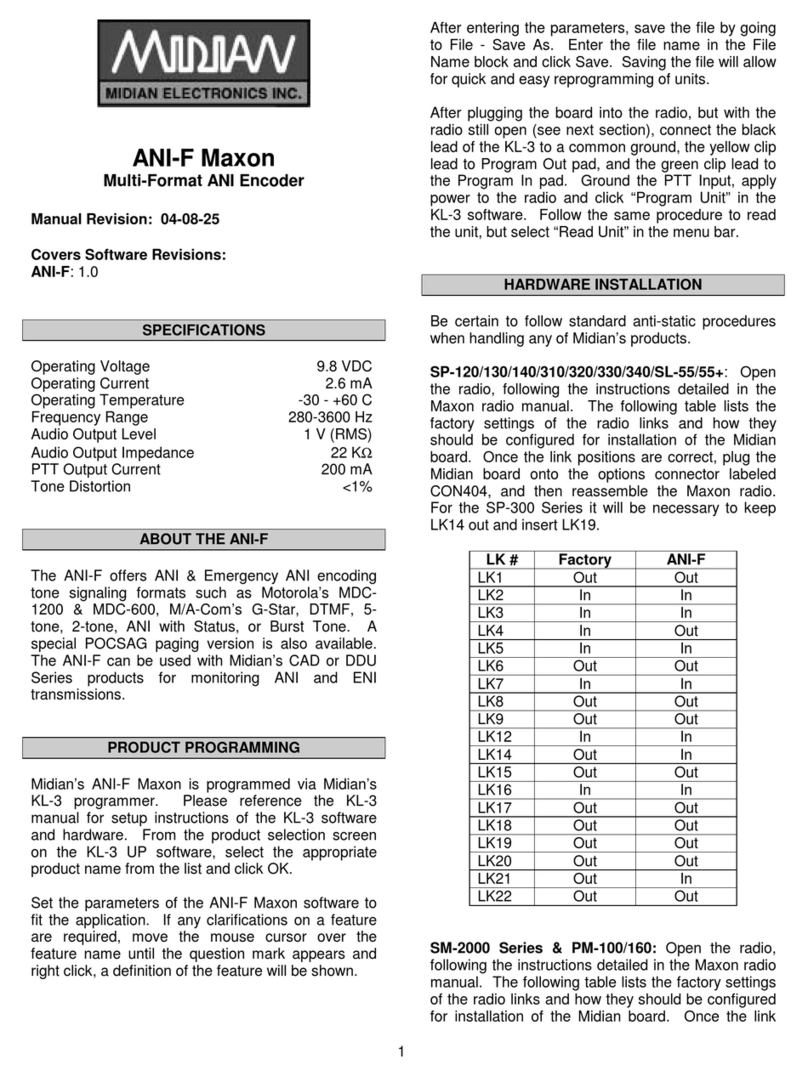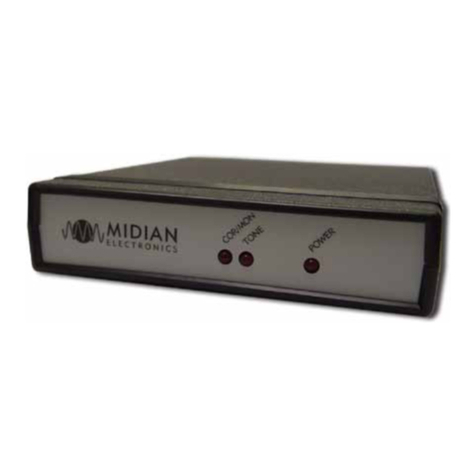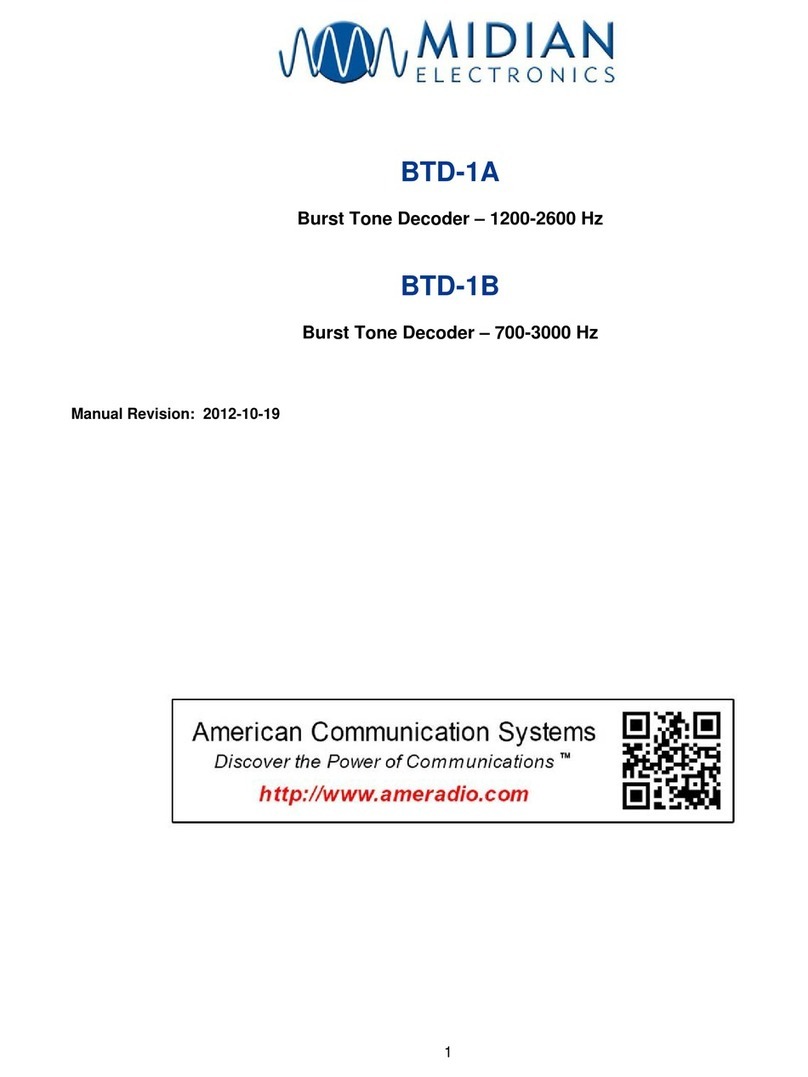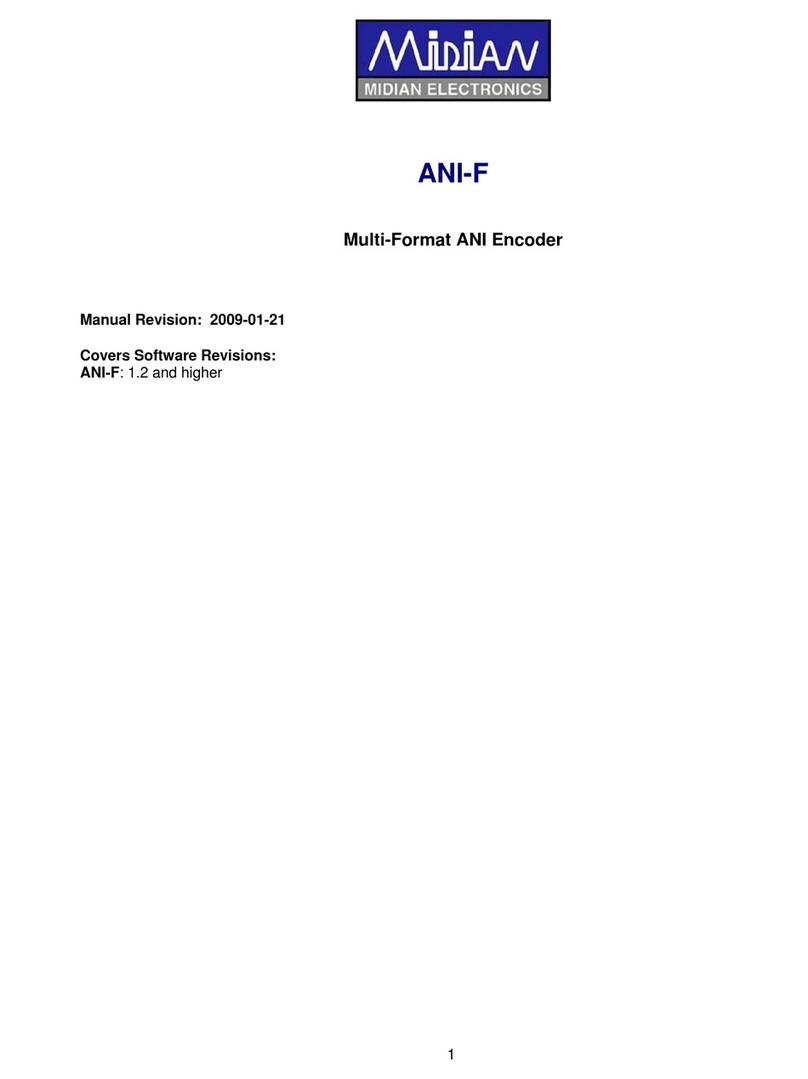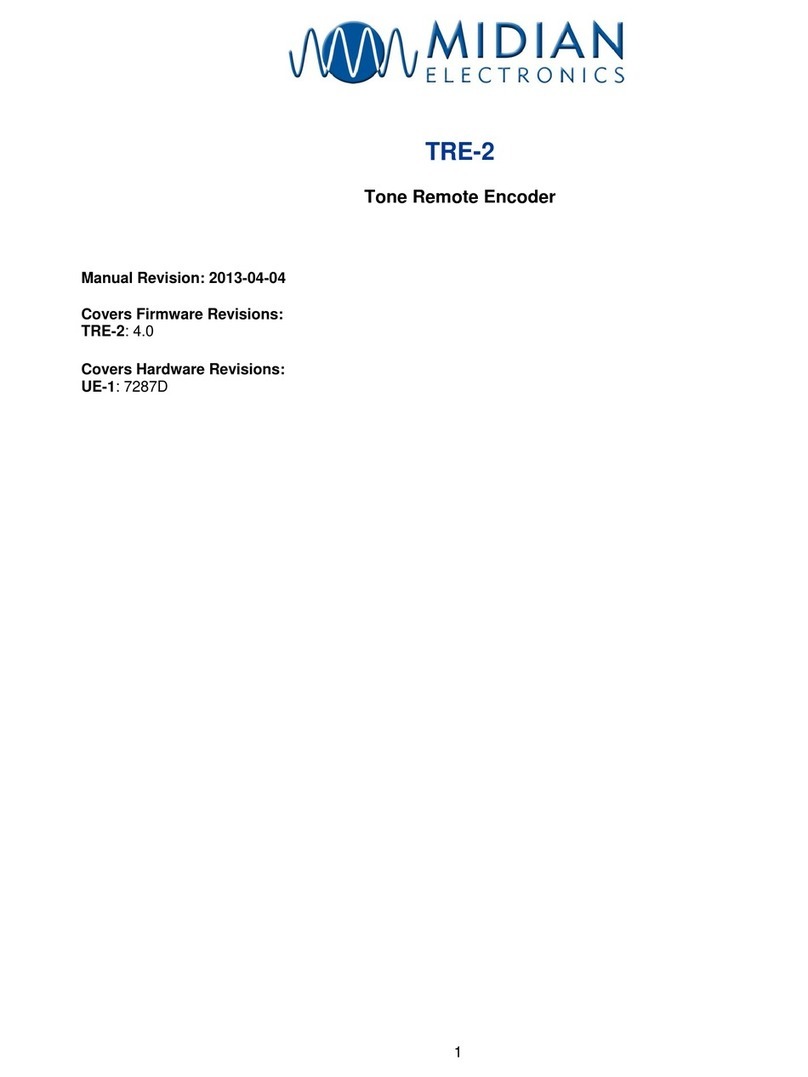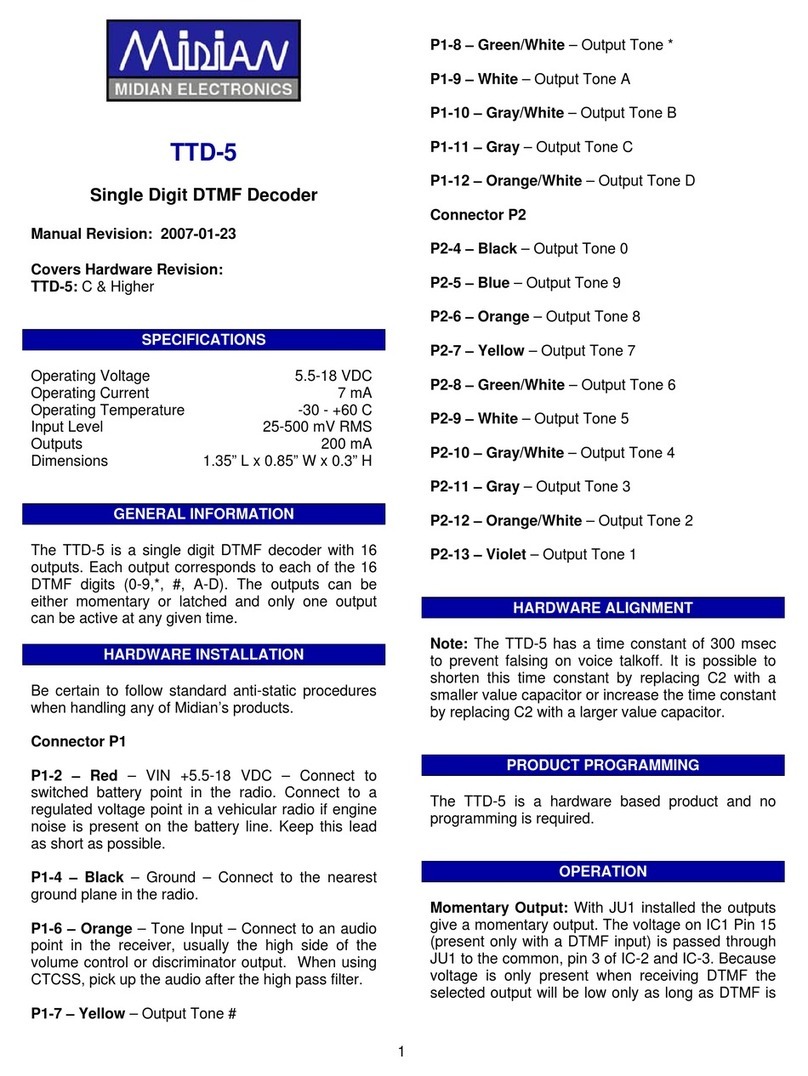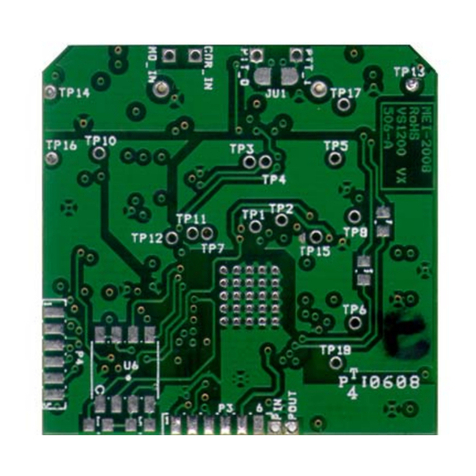
HARDWARE INSTALLATION
Be certain to follow standard anti-static procedures when handling any of Midian’s products.
P1-1 – Green – Transpond Output – Connect to the PTT switch of the radio.
P1-2 – Red – +VIN – Connect to switched B+ in the radio.
P1-4 – Black – Ground – Connect to the nearest ground point in the radio.
P1-5 – Blue – Alert Tone Output – Connect to a low impedance point in the modulator circuit. For high impedance
use P1-13. Momentary (3 second) 2400 Hz output.
P1-6 – Orange – Tone Input – Connect to an unsquelched audio point in the receiver.
P1-7 – Yellow – Negative Squelch – Connect to the proper squelch clamp point in the receiver. This output is low
before decoding. Upon decoding, it latches to a float state.
P1-8 – Green/White – Positive Squelch – Connect to the proper squelch clamp point in the receiver. This output
is high before decoding. Upon decoding, it loses it’s high and latches to a float state because of D9.
P1-9 – White – Call Output – Latched low output. Use for call LED. Use a current-limiting resistor.
P1-10 – Gray/White – Horn Output – Momentary (3 second) open collector to ground output upon decoding.
P1-11 – Gray – Monitor 1 Input – This input is used with an external monitor switch that is normally closed to
ground. When the ground is released OP amp U2-C will release the Squelch outputs allowing the channel to be
monitored. Placing the switch back to ground will cause OP amp U2-C to latch and turn off the Squelch outputs. If
this is not used, ground JU-2 or the gray wire.
P1-12 – Orange/White – Monitor 2 Input – Connect to a point in the transmitter that goes high when PTT is
tapped or depressed. This will unlatch U2-C and the squelch outputs for channel monitoring. When finished with
the conversation cycle the power to the unit to reset U2-C and the squelch outputs. If using this input, JU-2 or the
gray wire must be grounded.
P1-13 – Violet – Alert Out Hi Z - Connect to the modulator circuit. Use high impedance point in the radio. If
generating CTCSS, use the CTCSS point in the modulator. For low impedance use P1-5.
PRODUCT PROGRAMMING
A Tone: Encode the desired A tone to the MTSD-3 at 0.5 to 1.0 V p-p while monitoring TP2 with an oscilloscope.
Turn the pot R-12 until maximum amplitude is obtained. If the pot is turned past the peak then the tone will drop
out. Turn the pot the reverse direction to get the tone back. JU1 should not be installed during the setting of the A
tone. Once aligned cycle the power to the unit and recheck to make certain the amplitude is at maximum.
B Tone: Install JU1 on the MTSD-3. Encode the desired B tone to the MTSD-3 at 0.5 to 1.0 V p-p while
monitoring TP2 with an oscilloscope. Turn the pot R-11 until maximum amplitude is obtained. If the pot is turned
past the peak then the tone will drop out. Turn the pot the reverse direction to get the tone back. Once aligned
cycle the power to the unit and recheck to make certain the amplitude is at maximum. Remove JU1 when
finished.
Long Tone Group Call: Long tone group call can be accomplished by sending 4 seconds of the programmed A
tone, or by programming the A tone and the B tone for the same frequency. This product is not compatible with
Long B tone decode.
3
